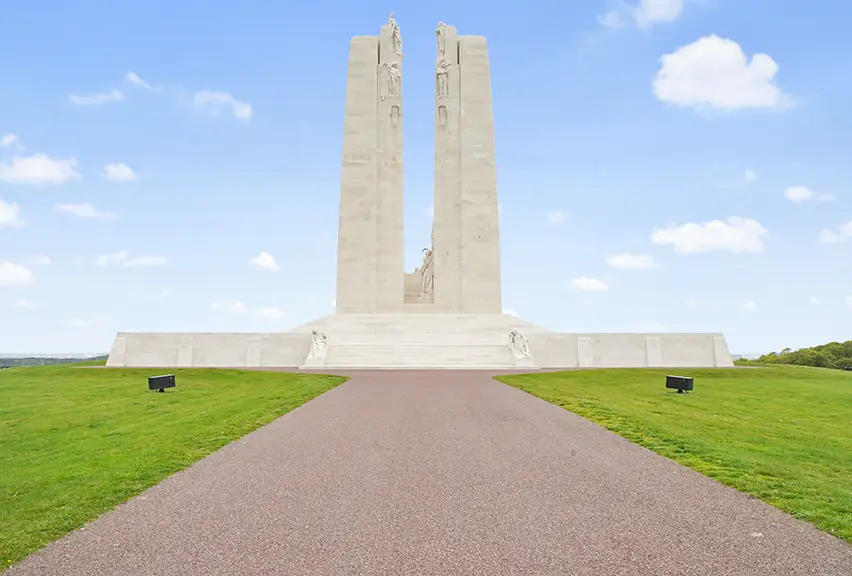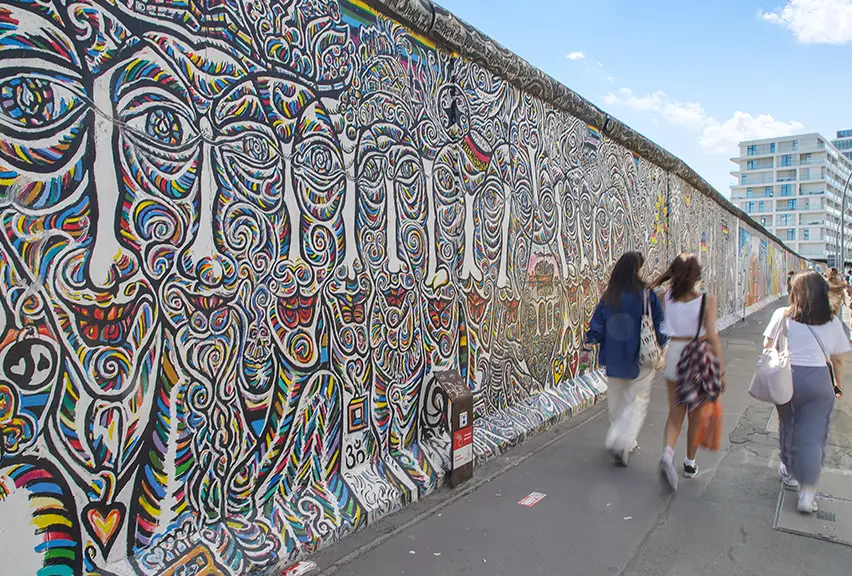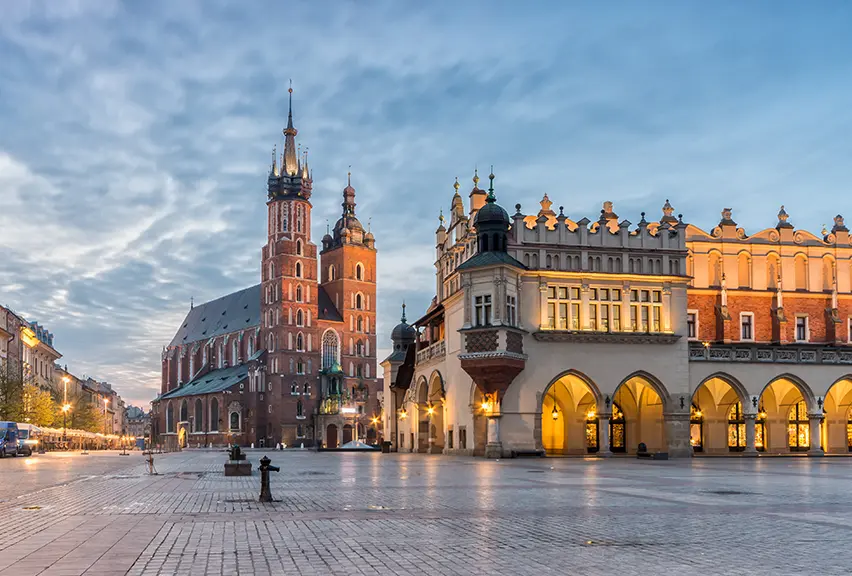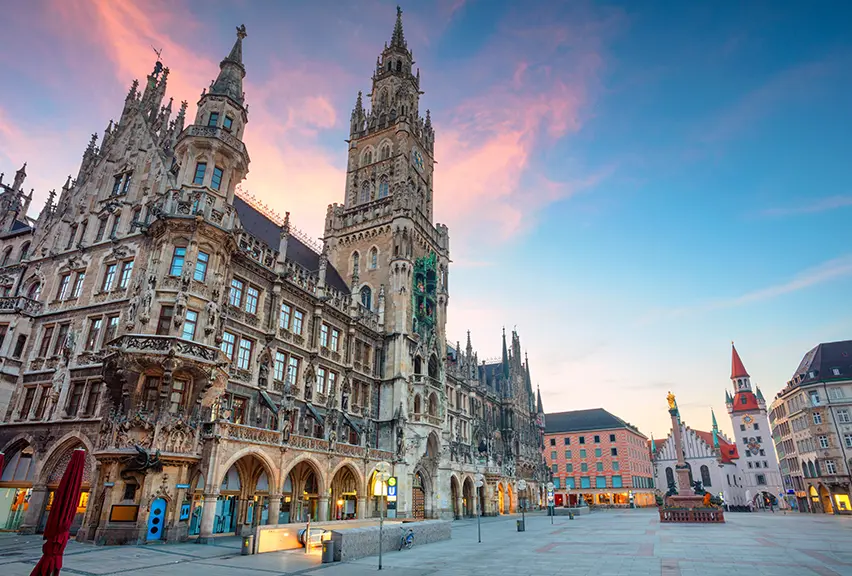 WW1 Battlefields School Trip
WW1 Battlefields School Trip
We still send loads of GCSE groups to the WW1 battlefields, which is fantastic because it means that we’re keeping the memory of that terrible war alive in future generations.
Our team know the battlefields really well and have been out there many times themselves. So, we can really tailor your tour to focus on your specific learning objectives and help you maximise the educational impact during the time you have available for the trip.
Why is this a great trip for GCSE students?
- Explore medicine through time (with a focus on how war sped up developments in medicine and surgery).
- Explore the evolution of warfare (again with a focus on how war sped up the development of technology).
- Bring key battles to life.
- Great value for money.
Most GCSE groups who visit the WW1 battlefields are either studying medicine through time or the history of warfare. And there are plenty of visits within the battlefields area to bring these topics to life for students.
Your group will have the opportunity to explore reconstructed trenches at places like the Memorial Museum Passchendaele 1917, Vimy Ridge, Hooge Crater Museum and Bayernwald (where you can see reconstructed German trenches). Here, they’ll discover how the trench system worked and find out more about the realities of trench warfare. And they’ll learn how the trenches themselves contributed to soldiers’ ill health and complicated the evacuation of sick and injured soldiers.
Your students can then find out more about how these environmental factors necessitated innovation in the chain of medical evacuation and the development of surgery and medicine. We’d definitely recommend a visit to the Advanced Dressing Station at Essex Farm in this case. Famous as the site where John McCrae wrote In Flanders Fields, you’ll be able to explore the renovated medical station to see how soldiers were treated ‘in the field’.
And at the Hooge Crater Museum, you’ll be able to see an original Ford T ambulance and explore an exhibition dedicated to medical aid during the war.
The Hooge Crater Museum also has some great displays of WW1 weaponry (as does the Hill 62 Museum), making it a great option for groups learning about the development of technology during the period.
You may also be visiting the WW1 battlefields to bring some of the key battles to life for your students. The Somme 1916 Museum brings the Battle of the Somme to life, while visits to Thiepval Memorial to the Missing, Newfoundland Memorial Park at Beaumont Hamel and Vimy Ridge highlight the scale of the human cost of the battle.
Top tips to make your trip truly unforgettable
Visiting the battlefields and the many fantastic museums and visits dedicated to the period here helps to bring the realities of the war to life for students. You can further humanise history by taking the time to visit the graves of former pupils of your school or relatives of group members. And we can help you with this (just let us know in advance that you’d be interested in this).
We’d also highly recommend that you take the opportunity to get involved in the Last Post Ceremony at the Menin Gate. We can arrange for your pupils to lay a wreath as part of the ceremony (and groups that do this often mention that it was a massive highlight of their tour).
How much does a school trip to the WW1 battlefields usually cost?
Well, the good news is that these trips often work out to be great value for money. That’s because most groups travel by coach (because they can then use the coach to travel around the area) and most teachers opt to guide the tours themselves. This year, tours taking in both Ypres and the Somme are starting around £266pp.
Want to know what a real school trip to the WW1 battlefields is like?
Check out this case study from St. George’s Weybridge.
History School Trip to Berlin

Berlin is such an exciting, vibrant city with so much going on that students generally seem to really love it. Plus, because Germany has taken the brave decision to confront its difficult history, there are heaps of history-focused visits and activities here, particularly for groups studying the Nazis and the Holocaust.
Another destination that we visit regularly as a team, we can put together an itinerary full of ‘wow’ moments to get your historians excited about history. And if you’re an annual visitor to Berlin (like many history teachers), we can suggest some alternative visits to keep the trip fresh for you (without dropping any of the educational value).
Why is this a great trip for GCSE students?
- Explore the economic, social and political landscape of Germany between 1918 and 1932 (from Empire to Weimar Republic and on to Nazi dictatorship).
- Learn more about how and why the Nazis rose to power.
- Find out what life was really like in Nazi Germany.
- Discover the realities of life in a divided city during the Cold War.
A visit to the Deutsche Historische Museum is a great place to start. Here, you can explore the economic, social and political landscape of Germany immediately after the First World War and through to the Weimar Republic.
And no school trip to Berlin would be complete without a visit to the Reichstag and its iconic glass dome. But for history groups studying the rise of the Nazis, this is a chance to bring to life the Reichstag Fire, which proved to be such a critical event.
If a key aim of your trip is to help students understand what life was like in Germany under Hitler and the Nazis, then visits to the Topography of Terror (where they’ll learn about the police state and the role of the Gestapo and SS), and the Haus der Wannsee Konferenz (where Nazi leadership met in 1942 to coordinate the Final Solution) have got to be high on your wish list.
We would also highly recommend a visit to Sachsenhausen Concentration Camp, to the north of Berlin, as this will give your students valuable insight into the concentration camp system.
Berlin’s also the best destination for groups studying the Cold War, because while Europe (and the wider world) was divided by ideological differences, Berlin experienced this division physically.
Of course, you’ll definitely want to make sure you visit some of the remnants of the Berlin Wall. The East Side Gallery is definitely worth a visit (great photo opp and the art will lead to some great discussions with your group). You can also learn more about the Wall at the Mauermuseum, Checkpoint Charlie Museum and the Berlin Wall Memorial.
I’d also recommend a visit to the Asisi Panorama, where your group will get a taste of what life was like in the 1980s, when the Wall stood dividing the city.
To delve deeper into the realities of life in a divided Berlin, the Stasi Museum and Gedenkstätte Hohenschönhausen (the Stasi Prison Memorial with guided tours offered by former inmates) are unmissable.
And one of our favourite museums, the DDR Museum, will be a huge hit with students, as the interactive exhibits immerse them in life in East Germany during the Cold War.
Top tips to make your trip truly unforgettable
Lots of groups studying the Nazis and the Holocaust choose to visit Krakow as well as Berlin. This works really well, as you can focus on the rise of the Nazis (the hows and the whys), how the Nazi state worked (i.e. control and dictatorship) and what life was like for Germans under the Nazis (i.e. opposition, resistance and conformity) while you’re in Berlin.
Then, in Krakow, you can shift the focus to life in Nazi-occupied Europe and the impact of the persecution of minorities. Of course, the big, important visit on this leg of your trip will be a visit to Auschwitz, where the industrialised murder of Jews and other minority groups will be brought into sharp focus for your students.
How much does a school trip to Berlin usually cost?
The cost of school trips to Berlin does vary quite a bit, because most groups choose to fly (and airline pricing isn’t as straightforward as coach pricing). But you’ll be looking at around £500 - £700pp for most trips to Berlin.
The visits and activities you choose will have a big impact on the cost of your trip, so if you are trying to keep costs down, make sure you let us know and we’ll suggest some cheaper alternatives (that still offer as much educational value).
If you can be flexible with when you go, we can also help you to reduce the cost of flights, which will make a massive difference (my tip is to avoid school holidays as much as possible).
Want to know what a real school trip to Berlin looks like?
Check out Turing House School’s case study.
History School Trip to Krakow

Krakow is a charming, medieval city in southern Poland and really is worth a visit if you’ve never been. It’s a really popular choice for school groups because of the opportunity to further explore the realities of the Holocaust and its impact on Europe.
Why is this a great trip for GCSE students?
- Explore Nazi racial beliefs and policies and how those manifested in the treatment of minorities, including Jews, Slavs, Roma, Sinti, homosexuals and disabled people.
- Find out more about Nazi persecution of Jews and the Final Solution.
A visit to Auschwitz-Birkenau Concentration Camp will be the headline visit of your history trip to Krakow. Having arranged so many of these trips over the years, we really can’t overstate the impact this visit will have on your students. It’s a tough day, for sure, but really worth it.
Not only will it improve their understanding of the concentration camp system, the scale of the Nazi persecution of Jews and the massive human tragedy of the Holocaust (over 1 million people lost their lives in Auschwitz alone), it will also keep the memory of it alive in future generations. And that’s so important now we’re over 80 years on from the liberation of Auschwitz.
Although that will be the focus of your trip, there are plenty of other educational visits in and around Krakow. I would really recommend including visits to Kazimierz (the former Jewish quarter) and the Galicia Jewish Museum to learn more about the history of the Jewish community in the city prior to Nazi occupation.
Schindler’s Factory Museum tells the story of life in Krakow under the Nazis. And at the Under the Eagle Pharmacy (which looks out onto the city’s Holocaust memorial), your students will discover the fascinating story of Tadeusz Pankiewicz, a Righteous Among the Nations who risked his own life to help Jews who had been forced into the city’s ghetto.
Top tips to make your trip truly unforgettable
There are two options for tours of Auschwitz – we can help you choose the best option for your group.
The standard tour is around 3 and a half hours and takes in the permanent exhibitions, the buildings at Auschwitz I – Main Camp and the most important buildings in Auschwitz II-Birkenau (including the prisoner barracks, unloading platforms, crematoria II or III and the ruins of the gas chamber).
The second option is the 6-hour study tour, which is a more specialised tour that includes selected national exhibits, Kanada and crematoria IV and V.
If you have time and your students are/will also be studying the Cold War, you may like to include a visit to Pomorska Street. This was the former Gestapo Headquarters and has an exhibition called ‘People of Krakow in Times of Terror 1939 – 1945’. This is a really fascinating exhibition because it compares the two totalitarian systems endured by the people of Krakow in the 20th century – the Nazis and the Communists.
How much does a school trip to Krakow usually cost?
As Poland really is too far for a coach trip for schools based in the UK, you’ll almost certainly be flying, and that does mean the price can vary. Currently, prices for school trips to Krakow start at just over £530pp.
If you’re able to be flexible in terms of when you travel, we can help you keep costs down by letting you know when you’re most likely to be able to snag cheaper flights.
Want to know what a real school trip to Krakow really looks like?
Wilmington Academy and Archway School have both told us what travelling to Krakow with Halsbury is really like in their case studies.
History School Trip to Munich & Nuremberg

Most of our history groups studying the Nazis and the Holocaust go for Berlin and Krakow. But Munich’s a really great alternative – after all, this is where the Nazi Party was essentially born and saw some of the key events in Hitler’s early political career (including the failed Beer Hall Putsch).
A school trip to Munich will also allow you to visit nearby Nuremberg. Of course, Nuremberg is famous both as the setting for the infamous, huge Nazi rallies and for the trials that brought prominent Nazis to justice after the end of World War 2.
Why is this a great trip for GCSE students?
- Explore the early development of the Nazi Party.
- Learn more about Hitler’s early career.
- Discover the story of the Munich Putsch.
Of course, one of the key events in Hitler’s early career (and in the story of the Nazis’ rise to power) was the Beer Hall Putsch. The day after Hitler and his followers stormed the beer hall and declared a national revolution, they marched on the Feldherrnhalle, where they were confronted by police.
You can visit the Feldherrnhalle on your trip, where you can learn more about these events and how it was later turned into a memorial to the Nazis killed in the failed putsch.
A visit to the Documentation Centre Nazi Party Rally Grounds will give your students a chance to understand how important the infamous Nuremberg rallies were in the Nazi propaganda machine. Held between 1923 and 1938, they became huge national events from 1933 after Hitler rose to power, as they were an important tool in projecting the idea of a strong, unified Germany under the Nazis.
Despite this, there was strong resistance to the Nazi regime in Munich – as a visit to the White Rose Foundation will help your students to understand.
Once you’ve explored the origins of the Nazi Party and how the Nazis rose to power, you can go on to look at the implications of that with a visit to Dachau Concentration Camp. Here, you can explore the Holocaust and the lasting impact that this genocide had on Europe.
Dachau was one of the first Nazi concentration camps (and certainly the longest running one) and now stands as a memorial to all who suffered and died there between 1933 and 1945.
You could also choose to visit the Jewish Museum of Munich, which tells the story of the city’s Jewish community and their history.
To end your trip, you could include a visit to the Memorium Nuremberg Trials, where your students will be able to explore how surviving Nazis were brought to justice and how these trials went on to shape international law.
Top tips to make your trip truly unforgettable
We’d highly recommend adding a National Socialism and Resistance–themed walking tour to your itinerary. On this tour, your group will explore Munich while learning about the role the city played in the history of the Nazi Party and Hitler (as well as the resistance movements in the city that sought to fight back against the Nazis).
Your group will also learn more about how the city has come to terms with its troubled history and what the future looks like for Munich nearly a century later.
How much does a school trip to Munich & Nuremberg cost?
School trips to Munich and Nuremberg are currently working out around £450pp for a 4-day trip. As with all trips though, the actual price will depend on the size of your group, when you want to travel, how you want to travel and what you want to do when you’re there.
But we’re always on hand to help you design a trip that works for your budget, while offering maximum educational value.
History School Trip to Ho Chi Minh, Vietnam

If your group is studying the Cold War and, more specifically, the relations between the superpowers, then it is really worth visiting Ho Chi Minh in Vietnam. Here, your students will have the chance to explore how the US and USSR involvement influenced the war in Vietnam.
You’ll also have the opportunity for some interesting discussion points about perspectives on history, and whether or not it’s true that ‘history is written by the victors’, when you visit the controversial but fascinating War Remnants Museum.
Why is this a great trip for GCSE students?
- Explore the significance of events in Asia for superpower relations.
- Learn more about the end of French colonial rule in Vietnam.
- Discover the extent of US involvement (with a chance to explore Johnson and Nixon’s influence).
- Find out how the Vietnam War ended.
Visiting Vietnam to explore the history of the Vietnam War will allow your group to really understand the significance of the war, both in terms of ending French colonial power in Indochina and as a proxy war between the USA (supporting the anti-Communist South) and the USSR (supporting the Communist North) during the Cold War.
You’ll be able to explore the Cu Chi Tunnels, where Viet Cong guerrilla fighters hid from French air and ground sweeps. As well as protecting fighters, the tunnels were communication routes and storage facilities for food and weapons.
You can also visit the Reunification Hall, a sight made famous by the pictures of tanks crashing through its gates in April 1975 as the city of Saigon fell to the North Vietnamese.
And the War Remnants Museum is a must-visit – not only because it contains so many fascinating artefacts from the war, but also because it allows students to view the war from the North Vietnamese perspective (which will lead to some fascinating discussions, no doubt).
Top tips to make your trip truly unforgettable
If you’re going to travel as far as Vietnam, it makes sense to offer this opportunity to as many students as possible. So, you could make this a humanities trip, as there’s loads of geography to discover too, from the rich, fertile lands of the Mekong Delta to the limestone karsts of Ha Long Bay.
And when you’re not exploring the history and geography of the country, you definitely shouldn’t miss the opportunity to take in a traditional water puppet show. Originally performed in the flooded rice paddies, this is a wonderful insight into Vietnamese culture.
How much do school trips to Vietnam usually cost?
School trips to Vietnam aren’t cheap, but they are a once-in-a-lifetime opportunity and one that students are otherwise likely to experience. Currently, prices start from around £1800pp.
Although it is expensive to get there, the good news is that Vietnam is a very inexpensive destination, so costs within the country for food, souvenirs and activities will be relatively low.
Want to know what a real school trip to Ho Chi Minh looks like?
Portsmouth Grammar School visited Ho Chi Minh to learn more about the Vietnam War – read their case study to find out how it went.
Planning a History Trip for Your GCSE Students?
We hope this guide has helped to inspire your next trip. Need further advice or support? Please don’t hesitate to contact us – our team are all super friendly and always pleased to help.
And for more guidance on organising your school trip, make sure you check out our ultimate guide – it’s packed full of handy tips.
We look forward to working with you on your next history adventure.